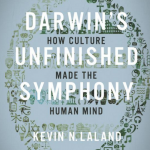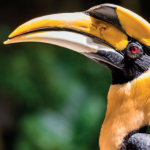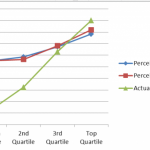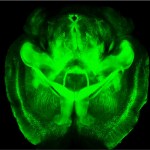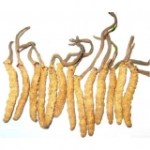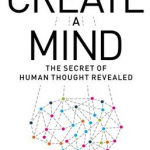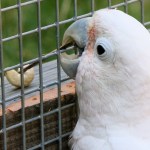Brain and Behavior
Although female northern elephant seals only typically deliver one pup, females will sometimes nurse offspring from other mothers as in this photo by Brocken Inaglory via Wikimedia commons. A situation like this would result in less milk available to each nursing pup.
I just read an interesting paper published in Physiology. Animals periodically undergo periods of food deprivation such as during hibernation, mating, molting and migration. During these period of fasting, they become insulin resistant which helps to preserve glucose stores in the body. In this review, the…
Darwin's Unfinished Symphony: How Culture Made the Human Mind is a new book on cultural evolution in humans from a biological perspective.
This is an interesting book and a good book, and I recommend it, but I need to add a strong caveat. The author could have made a more compelling argument had he more carefully studied and used some of the prior work that makes a similar argument. He strangely cites Terry Deacon in two places (once as a psychologist, incorrectly) for work Deacon has done, but seems to ignore Deacon's key thesis, which is pretty much the same as Laland's key thesis. (See:…
A few days ago I posted this item asking if it was really true that more celebrities have died this year than usual. That post went viral, so of course, the famous Doug McIntyre (who is, by the way, originally from Minnetonka, Minnesota) asked me to join him on KABC, McIntyre in the Morning, an LA based drive time radio show, 790 on your dial.
We had an interesting conversation, along with Randy Wang, and here it is:
[audio mp3="http://scienceblogs.com/gregladen/files/2016/12/MIM-790-KABC-12-30-16-G…"][/audio]
Before we address this question, let us recognize that years do not really kill people. That's just a poetic way of putting it, in common use.
I believe that every year starting around September or October, there is a random spate (spats are generally random, as are small droughts) of celebrity deaths, which lead to conjecture that more celebs are dying off than usual. This idea is then reinforced every time yet another celebrity dies for the remainder of the year, until we finally get to late December, and then everyone is trying to have that year arrested for mass murder. Strangely, people…
Crows are smart. Anyone who watches them for a while can figure this out.
But that is true of a lot of things. Your baby is smart (not really). Your dog is smart (not really). Ants are smart (sort of).
It takes a certain degree of objective research, as well as some serious philosophy of intelligence (to define what smart is) to really address this question. But when the research is done and the dust settles, crows are smart.
We were all amazed (or not, because we already knew that crows are smart) to find that New Caledonian crows made and used tools. Now, we know (see my most recent…
In the old days, the words "art" and "science" did not mean the same thing they mean today, at least in academia. Today, unfortunately, they have almost come to mean opposites. You can't be doing both at once. Or, at least, that's what people who haven't thought about it much may think.
Art can be used to engage people in science, and science can provide a subject for art, and in various ways, the twain shall meet.
But in Reductionism in Art and Brain Science: Bridging the Two Cultures, Erik Kandel does something both more extreme and more specific than simply joining the two endeavors.…
We hear this all the time. Pig physiology is like people physiology. Pigs and humans have the same immune system, same digestive system, get the same diseases. Pigs are smart like people are smart. Pigs are smarter than dogs. And so on. Ask a faunal expert in archaeology or a human paleoanatomist: Pig teeth are notoriously like human teeth, when fragmented. Chances are most of these alleged similarities are overstated, or are simply because we are all mammals. Some are because we happen to have similar diets (see below). None of these similarities occur because of a shared common…
I don't have time to read the original or make much comment on this, but since this topic has come up here before, I thought I'd pass on the press release from Burke REhabilitation and Research:
Burke Medical Research Institute Scientists Show Axon Growth Possible in Central Nervous System
White Plains, NY – May 21, 2014 –Recent findings by Burke Medical Research Institute scientists could one day pave the way for new treatments for spinal cord injuries. The study, published as a cover story, with commentary, in the current issue of the Journal of Experimental Medicine, found, for the first…
Credit: Image courtesy of Stanford University Medical Center, from ScienceDaily
According to a press release from Stanford University, California sea lions develop epilepsy from exposure to a toxin produced by algae called domoic acid. The animals develop seizures which can result in memory loss, tremors, convulsions and even death. The hippocampal region in the brain of the affected sea lions shows similar damage as humans with epilepsy, with losses of about 50 percent of neurons. Dr. Paul Buckmaster, professor of comparative medicine at Stanford was quoted as saying, "We found there was…
3D image of a brain made transparent using the CLARITY technique. Image from: Deisseroth Lab as posted in The NY Times
I have to admit I love the science section of The New York Times. The topic today: Dr. Karl Deisseroth and colleagues at Stanford University have developed a technique called CLARITY that uses hydrogel to make the brain look like it is made of Jell-O. They have successfully applied this technique to a whole mouse brain as well as part of a human brain. Using CLARITY, they are able to observe neuronal networks three dimensionally while…
Scientist Steven Wiederman from the University of Aukland (shown in image below) has recently published his work suggesting that dragonflies have the ability to focus on a target while blocking out other useless visual information. This is known as selective attention and his work is the first to demonstrate this ability in neurons from an invertebrate.
Sources:
Image Credit: David O'Carroll, University of Adelaide
Wiederman SA, O'Carroll DC. Selective attention in an insect visual neuron. Current Biology doi:10.1016/j.cub.2012.11.048
Scientists have discovered just what makes Rudolph's nose turn red:
Caterpillars with fungus growing out of their heads. Image of Cordyceps sinensis fungus from http://cordyceps-sinensis-mushroom.blogspot.com/
Whoever thought that a brain-attacking fungus might actually be good for you? This particular type of fungus, cordyceps, is known for attacking and killing caterpillars and can be found in the mountains of Tibet. Touted as a cure for various ailments including cancer, asthma, and erectile dysfunction, it is sold in Chinese markets as the "golden worm" or "Tibetan mushroom" for as much as $50,000 per pound! A new study published in RNA provides some…
The title of this post is, of course, a parody of the sociobiological, or in modern parlance, the "evolutionary psychology" argument linking behaviors that evolved in our species during the long slog known as The Pleistocene with today's behavior in the modern predator-free food-rich world. And, it is a very sound argument. If, by "sound" you mean "sounds good unless you listen really hard."
I list this argument among the falsehoods that I write about, but really, this is a category of argument with numerous little sub-arguments, and one about which I could write as many blog posts as I…
How to Create a Mind: The Secret of Human Thought Revealed is Ray Kurzweil's latest book. You may know of him as the author of The Singularity Is Near: When Humans Transcend Biology. Kurzweil is a "futurist" and has a reputation as being one of the greatest thinkers of our age, as well as being One of the greatest hucksters of the age, depending on whom you ask. In his new book...
Kurzweil presents a provocative exploration of the most important project in human-machine civilization—reverse engineering the brain to understand precisely how it works and using that knowledge to create even…
Check out this picture of a captive cockatoo (Cacatua goffiniana) in the Department of Cognitive Biology at the University of Vienna using a tool:
Image from: Scientific American
Figaro (shown above) was observed by a student using a piece of bamboo to try to retrieve a dropped pebble. This was the first documented evidence of a Goffin's cockatoo attempting to use a tool so the researchers decided to try a little experiment. They placed a cashew just outside of Figaro's cage and observed as Figaro attempted to retrieve it using a stick he found on the floor of the aviary. When that was…
A study published in the European Journal of Personality suggests that humans infected with toxoplasmosis gondii are more extroverted compared to non-infected individuals. According to the CDC, roughly 22.5% of Americans over 12 are infected. The effects of the parasite are attributed to increased levels of dopamine in the brains of infected individuals. People can become infected with the parasite through exposure to undercooked contaminated meat, unwashed fruits and vegetables from contaminated soil as well as infected cat litter.
Source:
Lindová J, Příplatová L, Flegr J. Higher…
Damage to the auditory nerve connecting the inner ear and brain causes hearing loss in some individuals. Researchers Dr. Marcelo Rivolta from the University of Sheffield and colleagues have shown that human embryonic stem cells that were differentiated into auditory nerve cells can improve overall by ~45% hearing in gerbils that were treated with ouabain to damage the nerves. Ten weeks after transplantation, some of the differentiated cells were shown to grow projections that connected with the brain stem and the animals could perceive more faint sounds.
Of course the purpose…
You may recall a prior post in which I talked about how intelligent crows are. In fact, there was a special on PBS demonstrating their ability to solve problems and even recognize human faces (HIGHLY recommended if you haven't yet had a chance to see it):
Watch A Murder of Crows on PBS. See more from Nature.
In a more recent study, Dr. Marzluff and colleagues used brain scans to demonstrate that crows not only remember faces, but they can also remember how they were treated by various people. In the study, his team captured 12 wild American crows while wearing latex "…
